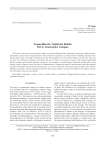Ethnology. Рубрика в журнале - Archaeology, Ethnology & Anthropology of Eurasia
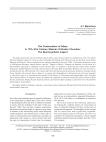
The consecration of altars in 17th–21st century Siberian orthodox churches: the neurosymbolic aspect
Статья обзорная
Бесплатно
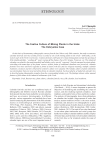
The festive culture of mining plants in the Urals: the Dobryanka case
Статья научная
On the basis of documentary ethnographic sources from the late 19th to early 20th centuries, the study reconstructs calendar festivals and rites of that period, recorded at one of the mining plants in the Urals—Dobryanka, in the western part of the Perm Governorate. Common festivals celebrated at Uralian mining plants include the greeting of birds (kashke-plishke), “sending off” water (seeing off the Kama), Day of St. Sergius, Pentecost, etc. The industrial calendar was related to the main household and holiday cycles; special “corporate” festivals emerged at private plants, coinciding with name-days of the plants’ owners; archaic forms of traditional ritualism were preserved; calendar festivals were more and more regarded as forms of leisure with less and less religious meaning; multiple calendar traditions coexisted; and new urban forms of festive culture were adopted. The holiday culture of plant settlements was intermediate between rural and urban forms of calendar ritualism. Each peculiarity of industrial calendar rites is described using ethnographic examples from the corresponding holiday cycle. The findings indicate rather unusual features of folk culture in the industrial settlements of the Urals.
Бесплатно
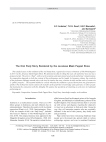
The oral Panji story rendered by the Javanese mask puppet show
Статья научная
This study focuses on the rendition of the oral Panji Story, registered in Unesco’s Memory of The Word Register in 2017, by the Javanese Mask Puppet Show. We demonstrate that in telling the story, the performer does not use a prepared script. The story is “fluid”, with several variations and innovations based on the performer’s interpretation. Its composition depends on both the context of the performance and its length. In Javanese culture, the creativity of the performer (dalang) extends only to the way he renders the story, whereas its title and the order of events are a “public property”. The nyantrik method is a mode whereby the tradition is passed down from one generation to another. The method not merely ensures the transfer of the performer’s knowledge and experience to other people, but maintains the connection with the Almighty. We analyze the specificity of rendering an oral story in traditional performing art.
Бесплатно
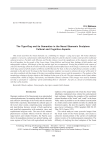
The tiger-dog and its semantics in the Nanai Shamanic sculpture: cultural and cognitive aspects
Статья научная
This article describes the Nanai shamanic set, combining two images—a dog and a tiger. The Nanai shamanic sculpture is viewed as a phenomenon reflecting both the subjective and the objective reality constructed by traditional cultural practices. Parallels with Siberian and Pacific cultures reveal the significance of the domestic animal and the wild predator for the people of the Lower Amur. Using folkloric and lexical data, findings of field studies, and ethnographic evidence, folk images of the dog and the tiger are reconstructed. Viewing the problem in the context of collective knowledge about the world reveals the archetypical and modified layers in the image’s construction. The idea of the dog, typical of all the peoples of Siberia and the Russian Far East, is that of a draft animal, assistant, sacrifice, and guide to the afterworld. Its image in the Nanai shamanic sculpture was meant to enhance the power of the spirit. It was often combined with the image of the tiger, personifying shaman’s power and the progenitors. The analysis of the terminology relating to the tiger attests to the Southeast Asian roots of its cult. The tiger semantics in the Nanai culture resulted from a blend of Tungus, Paleoasiatic, and Manchu (Chinese) elements. These images were used by shamans not only as assistants in “capturing” spirits and holding them in “detention”, but also as a means of communicating with the world of spirits.
Бесплатно
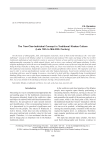
The tree-clan-individual concept in traditional Khakas culture (late 19th to mid-20th century)
Статья научная
On the basis of ethnographic, folk, and linguistic materials, most of them newly-introduced, the “tree-clan- individual” concept in the Khakas culture is reconstructed and analyzed. The status and image of the tree in their traditional mythological and ritualistic system is assessed. Notions of man and his environment were related to anthropomorphic reasoning, by which natural objects, such as trees, were endowed with human attributes. In their religious-mythological views the tree was identified with a person, with the crown of the tree being the head, the trunk being the body, branches as being arms, sap as being blood, etc. Trees were believed to be either male or female. In the traditional consciousness, human life scenarios were closely paralleled to those of trees. The vegetative code was used to refer to various psychophysical, mental, and other human phenomena. Social norms included special rules in dealing with trees, used in logging. In essence, a tree had to be dealt with like a humanlike being. In mythological thinking, felling a tree was to some degree tantamount to murder. Souls of specific individuals or groups were likewise associated with trees, so each Khakas seok (clan) had a sacred tree. It was an integral part of the burial rite. The tree, then, was a key element in the ideological structure, having a broad semiotic field.
Бесплатно
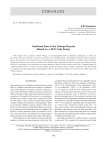
Traditional bow of the Selenga Buryats (based on a 2019 field study)
Статья научная
Three Buryat bows, studied at Tashir village, in the Selenginsky District, Republic of Buryatia, in 2019, are described. They are relatively well preserved, and one is still functioning. A detailed description of their design is given. The specimens are similar in terms of morphology and technology (specifically, an outline without strings), design of transition zones, section of elastic part, and the shape and position of horn overlays. The tension force of the bows is evaluated, and conclusions are made about the impact of force and practical use. Comments made by a Buryat archer (the bow's owner) are cited about specific use under various weather conditions. The information is compared with that gained from ethnographic sources, and archival illustrations made in late 1800s and early 1900s are given.
Бесплатно
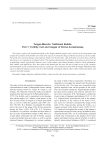
Tungus-Manchu traditional beliefs. Part 1: fertility cult and images of divine ancestresses
Статья
This article explores the traditional beliefs of the Tungus-Manchu peoples and is based on the hermeneutic and comparative analysis of the fertility cult. Some of its aspects are related to images of divine ancestresses, the tree of life, the hearth cult, ancestral lineage, and animistic beliefs. For the fi rst time, cults of fertility, as well as those of divine ancestresses, are regarded as an integral whole. This analysis demonstrates that images of ancestresses are preserved in mythology, rituals (specifi cally domestic ones), tribal culture, and cultural features related to birth, shamanism, ludic culture, and applied art. Also, they relate to the hearth cult, fi re rites, the tree of souls or tree of life, creation, and shamanism as part of folk medicine and rites of passage. The conclusion is made that the Tungus-Manchu fertility cult is an inherent religious system, relevant to the mentality, archetypal cultural values, ethno-cultural specifi city, and contacts with other peoples.
Бесплатно
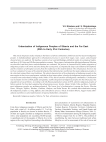
Urbanization of indigenous peoples of Siberia and the Far East (20th to early 21st centuries)
Статья
Бесплатно
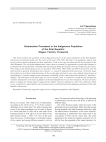
Статья
This article explores the specifi city of the urbanization process in the native population of the Altai Republic and assesses its principal trends over the course of the years 1926–2020. The focus is on quantitative aspects such as the growth of urban settlements and their population. I look at the ways the urban network has developed in the Altai Mountains. The only urban administrative center shows a potential for agglomerative growth and continues to accumulate the rural population. Townships that had emerged during the Soviet period were unattractive for natives. Three stages in the urbanization process are described: 1926–1950s, 1960–1980s, and 1990 to the present. Over the entire period in question, urbanization was extensive, i.e. caused by migration from rural areas. At the fi rst stage, the key factor was political (collectivization). In the second stage, the factors were socio-cultural (attractiveness of urban lifestyle), economic (higher income and greater availability of jobs), and political (the abolition of “futureless” villages). The main factor at the third stage was socio-economic crisis. A conclusion is made that the potential for extensive urbanization in the native population of the Altai Republic has not yet been exhausted. The most attractive places to migrate are still the region’s capital and its suburbs. However, migration to other cities of Russia is likely to rise. A prediction is made that the role of intensive factors of urbanization in the indigenous population of the Altai Republic will increase.
Бесплатно

